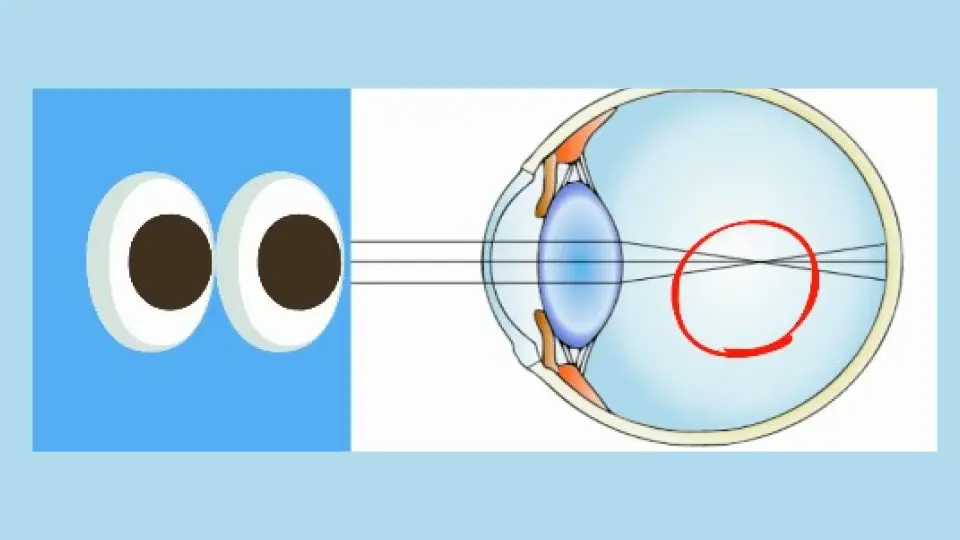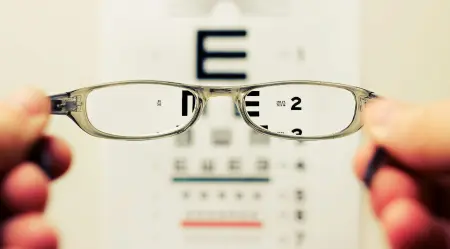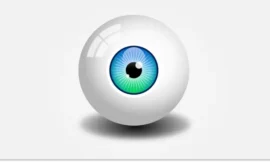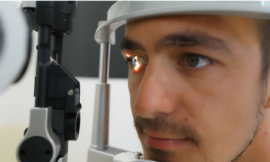Summary
If you have myopia or nearsightedness symptoms such as difficulty seeing distant objects, LASIK is the best surgical option for getting clear and sharp vision.
It is suitable for low to high-degree myopia ranging from -0.5D to -0.20D.
LASIK for nearsightedness provides clear vision for an extended time, allowing you to see everything without glasses or contacts.
On This Page
- Summary
- Laser Eye Surgery for Myopia
- Can LASIK For Nearsightedness Works?
- LASIK Treatment for Both Nearsightedness & Farsightedness
- How Is LASIK For Nearsightedness Performed?
- Side effects of LASIK Surgery
- Suitable Candidate of Myopia For LASIK
- Advanced LASIK Techniques:
- Other Refractive Surgeries
- Long-Term Outcomes and Vision Stability
- Discussion
- Frequently Asked Questions-LASIK FOR NEARSIGHTEDNESS
Nearsightedness, also known as myopia, is an eye condition that makes a person unable to see objects at a distance. One common treatment is the use of contact lenses or glasses. After learning about the advantages of LASIK for nearsightedness, some people believe it is a better option to consider, and they are cautious about its effectiveness in achieving faster clear vision recovery.
LASIK can help treat a variety of vision disorders, including nearsightedness. According to research on helping patients achieve clear vision, approximately 90% of those who undergo LASIK surgery regain clear and sharp vision.
In nearsightedness, you may have
- Difficulty in seeing distant objects.
- Eye aches.
- Affects both eyes.
- Itchy and burning sensation.
| Aspect | Observation |
| Dependence on corrective lenses post-LASIK. | Remarkably reduced. |
| Patient satisfaction rate? | The majority (80%) are satisfied. |
Laser Eye Surgery for Myopia
Different corneal refractive surgery methods can be used to treat myopia or nearsightedness for a longer period. Laser eye surgery for myopia includes LASIK, PRK, LASEK, and contact lenses (EVO ICL, IOLs, etc.).
Myopia treatment with LASIK involves corneal reshaping by extracting some tissues that cause refractive error and make it difficult for the patient to see distant objects.
Can LASIK For Nearsightedness Works?
Nearsightedness can be treated with both traditional and advanced LASIK procedures. It was designed specifically to treat myopia (caused by refractive errors) with excimer lasers.
The Alcon wavelength excimer is the most advanced and fast laser available in the United States. It takes about 10 minutes to treat low to high myopia (nearsightedness) in both eyes.
LASIK Treatment for Both Nearsightedness & Farsightedness
LASIK can treat both nearsightedness and farsightedness, and ophthalmologists use this surgery to treat 9.
- Myopia (30-40% of eye patients in the United States are affected) and
- Hyperopia (10% affected in the United States; approximately 14 million patients) with or without astigmatism.
It would be exciting if your vision recovery from myopia could be clearer and sharper for an extended period, possibly for the rest of your life.
How Is LASIK For Nearsightedness Performed?

Before performing surgery on a patient, every eye surgeon must review their medical history. Let’s see how the surgeon performs the surgery in the operating room.
- The patient’s cornea will be scanned using an eye scanner, the Pentacam.
- Right after this, the eye surgeon will administer sedatives to keep the patient comfortable.
- Following the sedatives, numbing drops will be administered to the patient on the surgery bed to alleviate discomfort.
- To prevent blinking, your doctor will use an instrument known as an eye speculum.
- Then, using a scanned image of the cornea, your eyes will be directed towards the laser source.
- Following the creation of a flap, lasers are directed to the cornea to remove the debris that causes myopia.
- The senior surgeon continuously monitors the process from the screen to ensure that it runs smoothly.
- Afterward, the wound healing procedure, your surgeon will return the cornea flap to its original position.
- A few optical drops will be placed in your eyes to prevent dryness and irritation following LASIK surgery.
Side effects of LASIK Surgery
Your doctor will talk to you about some potential side effects of LASIK surgery for nearsightedness. These side effects are:
- Dry eyes (reported in 20% of patients).
- Blurred or hazy vision.
- Itching and irritation.
- Myopia can be under or over-corrected.
- Eye infection occurs in rare cases.
- Light sensitivity during the night or in low-light situations.
- Incorrect folding of the corneal flap.
- Worser vision than before. It happens in rare cases.
Some eye conditions last only a short time, while others can last much longer. If you follow your ophthalmologist’s instructions, there is a chance that you will not experience these complications following your eye surgery.
The dry eyes condition will be remedied with ocular drops within a few days following your LASIK surgery, and only 2-3% of the 20% will experience severe dry eyes. With appropriate consultation with your doctor, you can reverse the side effects and have clearer, sharper vision than ever before.

Suitable Candidate of Myopia For LASIK
Your ophthalmologist will conduct the necessary ocular tests to determine your eligibility for LASIK for nearsightedness or myopia.
These tests will show an image of your cornea as well as eye conditions such as myopia (nearsightedness), hyperopia (farsightedness), and astigmatism (blurry vision) to prevent additional risks from LASIK.
According to scientific reports, LASIK is equipped with more advanced technology that can treat nearsightedness ranging from -0.2 to -20 D, with or without blurry vision (astigmatism).
The range of LASIK treatments is low to high, and eye care practitioners recommend it for low to moderate myopia with low-risk factors.
The other eligibility criteria for LASIK are discussed in the article that you can read here.
Advanced LASIK Techniques:
If you meet the criteria, LASIK may be the best treatment option for your nearsightedness or myopia. The reason for LASIK treatment for myopia is that you can get personalized care for your eye condition. The LASIK options are:
- Wavefront-Guided LASIK
- Monovision LASIK
- Bladeless LASIK
Other Refractive Surgeries
Now let’s explore the laser eye surgeries that can treat myopia with astigmatism or not. A few alternative LASIK surgeries are mentioned here;
- PRK
- LASEK
- EVO ICL
- CRT
- SMILE
Your medical evaluation by your eyecare practitioner will determine which surgery you are eligible for. Not every individual would be prescribed to get LASIK.
Long-Term Outcomes and Vision Stability
The advanced LASIK procedure can provide better results for your nearsightedness or myopia. It can last for the rest of your life if you live a healthy lifestyle, free of autoimmune disorders.
There have been reports, that conventional LASIK only provides clear or sharp vision for 12 months.
When deciding to correct refractive eye disorders, remember that it is better to be safe than sorry.
Discussion
So, myopia, or nearsightedness, is an eye condition in which the patient can’t see distant objects without contact lenses or glasses.
If you have a healthy cornea with nearsightedness or myopia and want to get rid of glasses or contact lenses, LASIK is the best option for you. Consult with your eye surgeon about LASIK. The doctor will help you make an informed decision about your eye condition.
Furthermore, there are risks associated with LASIK surgery, but if you have it performed by a well-experienced and certified surgeon, your chances of complications are significantly reduced.
Frequently Asked Questions-LASIK FOR NEARSIGHTEDNESS
Does LASIK work on nearsightedness?
Yes, LASIK surgery is effective for nearsightedness with or without astigmatism, and it works by creating a corneal flap using lasers to correct the refractive error.
What eyesight is not eligible for LASIK?
Unstable vision or eyes with cataracts, which most commonly occur in the elderly, are not candidates for LASIK surgery. You must have stable vision before considering LASIK surgery.
What is the maximum nearsightedness for LASIK?
The maximum nearsightedness range for LASIK is -0.5D to -0.9D, as recommended by ophthalmologists, but it can treat nearsightedness up to -0.20.
Is LASIK better for near or farsighted people?
Absolutely yes! LASIK is a more effective and customizable treatment for both near and farsightedness. Individuals with nearsightedness or farsightedness may be eligible for LASIK surgery.
References:
- Ikeda, T., et al. (2017). Twelve-year follow-up of Laser in situ keratomileusis for moderate to high myopia. BioMed Research International, 2017, 1–7.
- Moshirfar, M., et al. (2023, July 24). Laser in situ keratomileusis (LASIK). StatPearls – NCBI Bookshelf.
- Refractive Eye Surgery: helping patients make informed decisions about LASIK. (2017, May 15). PubMed.




